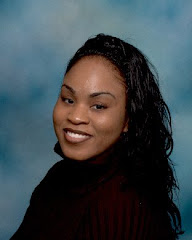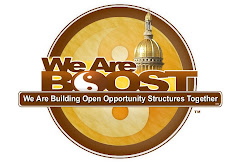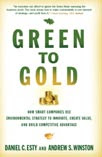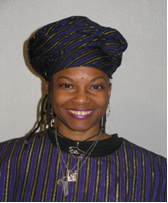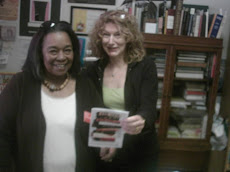 TUNE IN: We Are BOOST Founder Tim Razzaq interviewed by Darlene McKnight on WIMG Radio on Tuesday, January 13 from 7:30 - 8:00 pm.
TUNE IN: We Are BOOST Founder Tim Razzaq interviewed by Darlene McKnight on WIMG Radio on Tuesday, January 13 from 7:30 - 8:00 pm.
Location: WIMG Radio, AM 1300
Event Description: We Are BOOST Founder and Executive Director, Tim Razzaq, interviewed by Darlene McKnight on WIMG Radio, AM 1300.
Topic: Revisting Community Benefits Agreements and BOOST and We Are BOOST 2009 Agenda for Community-First and Environmental Economics.
Friday, December 26, 2008
We Are BOOST Founder Tim Razzaq: Live interview with Darlene McKnight on WIMG Radio "Trenton Talks" Tuesday, January 13 from 7:30 - 8:00 pm.
Posted by
GSS SET Central
at
12/26/2008 01:18:00 PM
0
comments
![]()
![]()
Princeton Environmental Film Festival Opens with Radiant City
 The Princeton Environmental Film Festival is sponsored by the Princeton Public Library. All screenings and talks will be held in the library's Community Room on the first floor. The library is located at 65 Witherspoon Street, Princeton, New Jersey. All screenings and talks are free and open to the public.
The Princeton Environmental Film Festival is sponsored by the Princeton Public Library. All screenings and talks will be held in the library's Community Room on the first floor. The library is located at 65 Witherspoon Street, Princeton, New Jersey. All screenings and talks are free and open to the public.
Opening Night Film - Radiant City 7:00 p.m - Directed by Gary Burns 2006 * Running time: 86 minutes
Gary Burns, Canada's king of surreal comedy, joins journalist Jim Brown on an outing to the burbs. Venturing into territory both familiar and foreign, they turn the documentary genre inside out, crafting a vivid account of life in The Late Suburban Age.
Burns and Brown rummage through a toybox of cultural references, from Jane Jacobs to The Sopranos, to create a provocative reflection on why we live the way we do. Riffing off sitcoms and reality TV, they play fast and loose with a range of cinematic devices to consider what happens when cities get sick and mutate.
By Adam Grybowski
Posted: Tuesday, December 23, 2008 6:41 PM EST
MASSIVE amounts of waste have accrued over time to create five great garbage patches in the world’s oceans. Ian Connacher sailed to the so-called Eastern Garbage Patch in the Pacific Ocean in 2003, sent by a corporate sponsor to gauge the feasibility of collecting some of the garbage and recycling it.
”Most people are fascinated by this floating island of garbage,” he says. “It’s not that. When you get out there, you realize you’re not bringing anything back.”
Although large items of detritus are floating on the ocean’s surface, most of the pollution is invisible. The ocean looks nearly pristine, which is because sunlight and waves break down plastic into smaller and smaller pieces that aren’t readily seen. Capt. Charles Moore of Algalita Marine Research Facility, who calls the ocean a “plastic soup,” measured a sample of ocean water with a 10-to-1 ratio of plastic to plankton.
Marine life can mistake plastic as food, and when fish eat it, the material begins to work its way up the food chain. Enhancing this menace is the fact that chemicals are attracted to plastic.
”It wasn’t a happy story,” says Mr. Connacher, who at the time was a segment producer for Discovery Canada’s Daily Planet. “I wanted to know how to fix it.”
He pitched them an idea for a documentary on plastic. “I knew plastic was compelling enough to do a film on,” he says. “We touch it everyday and hardly think about it.” Discovery said no. How about a year off so he could pursue the idea on his own? When they said no again, Mr. Connacher quit.
That decision propelled him on a three-year odyssey in pursuit of plastic’s story. He visited five continents and 12 countries, conducting nearly 50 interviews in laboratories, factories and landfills. He shot more than 300 hours of film that became an 85-minute documentary, Addicted to Plastic. On Jan. 7, when the film makes its U.S. premiere at the Princeton Environmental Film Festival, Mr. Connacher will be on hand to answer questions.
The third annual festival, running Jan. 2 to 11, is comprised of documentary films on a number of environmental issues, including waste (Trashed), energy (Burning the Future: Coal in America) and green building (The Greening of Southie). A host of talks and panel discussions, featuring a bevy of the industry’s movers and shakers, complement the films.
”Film is a medium for people to become more aware, and we hope that awareness will be coupled with action,” says Susan Conlon, the festival coordinator.
”I wouldn’t have made this (film) if I didn’t think it would help,” Mr. Connacher says. “It’s up to the individual to take responsibility, and I hope this gives them a few tools. “
On Jan. 9, as a model for action, Shana Weber, of the Princeton University office of sustainability, will present student-produced short films and podcasts on issues such as green roofs and food waste.
Ms. Weber cut her teeth in radio production as a graduate student at Indiana University, where she earned her doctorate in environmental science. Producing pieces for a program on public radio, she had complete freedom to translate the complicated issues she was learning about for a general audience.
”I fell in love with developing the tools to communicate really difficult environmental issues in a way that’s fun,” she says. “Sometimes when you have a technical or research-heavy topic, it’s not accessible to people.
”When I came here (to Princeton University in 2006) I wanted to take it to the next level,” she adds. The Student Environmental Communication Network is a training and internship program that teaches students how to tell stories using audio and video technology. Ms. Weber’s vision is to create a model for a national network of students who produce stories on sustainability from their perspective.
”There has been a great demand to hear youth voices on a number of topics,” she says. “There’s always been a small cohort of students interested in this stuff. It has reached a new level of importance for more students,” and not necessarily just the hardcore environmentalists.
The traces the surge of awareness and the desire to participate through a conflux of events. Two years ago An Inconvenient Truth hit theaters. The film won an Oscar and Al Gore a Nobel Prize. Then Hurricane Katrina presented a real-life version of the extreme weather Gore forecasted. Finally, the scientific community’s reports on the veracity of global warming “became more statistically strong,” Ms. Weber says.
For Mr. Connacher, awareness and action were one and the same. “I was pretty asleep myself,” he says of his pre-filming attitude toward plastic. “I never realized how much plastic was around us. I never realized how much did not get recycled. And I didn’t know about the chemicals.”
He is referring to the controversy over the toxicity of certain plastics, which he examines in his film. He interviews scientists who, though they have yet to find conclusive evidence, have diminished their personal use of plastic due to health concerns. Mr. Connacher has followed step, tossing his Teflon pans, among other measures.
He concedes he couldn’t have made his movie without plastic. The material is useful, and its disappearance would considerably alter everyday life. “I’m not out to demonize the material,” Mr. Connacher says. “This movie is to start the debate. There are no easy solutions or magic bullets.”
Indeed, plastic alternatives presented in the film, such as bioplastic made from vegetables, have their own problems. When farmland is used to grow crops for bioplastic, less food is available for a hungry world.
Among discussion of bioplastic and green roofs, there is danger of losing sight of initiatives that are less visible but equally important. “In this business we call it ‘sexy tech,’” Ms. Weber says of headline grabbing technology. “It’s visible, it’s fun to talk about, it’s big and everyone thinks it has a huge impact. One of the things I love to emphasize is that so many things behind the scenes that are not sexy are absolutely essential pieces of the puzzle.”
For example, miles of steam pipe run underneath Princeton’s campus. In sections where pressure switches from high to low, energy is lost. Engineers have installed microturbines to capture that energy and produce electricity. One microturbine powers six dorms. “And no one will ever see that,” Ms. Weber says. She calls it “The gritty underbelly of sustainability,” adding, “That’s where the gold is.”
The Princeton Environmental Film Festival will be held at the Princeton Public Library, 65 Witherspoon St., Princeton, Jan. 2-11. Communicating Sustainability: Video and Podcast Explorations by Princeton University Students will be presented Jan. 9, 3:30 p.m. Addicted to Plastic will be screened Jan. 9, 7 p.m. All screenings, talks and panel discussions are free. (609) 924-9529; http://www.princeton.lib.nj.us/peff
Posted by
GSS SET Central
at
12/26/2008 10:55:00 AM
0
comments
![]()
![]()
Sunday, December 21, 2008
Please join us for Kwanzaa at the Lighthouse as we begin this Historic New Year!


POSITIVE BLACK IMAGES CONNECT (PBI CONNECT)
Lighthouse Community Outreach Center
Positive Black Images CONNECT
Posted by
GSS SET Central
at
12/21/2008 06:03:00 AM
1 comments
![]()
![]()
Everything about Kwanzaa, but you did not know where to ask
 Kwanzaa is a unique African American celebration with focus on the traditional African values of family, community responsibility, commerce, and self-improvement. Kwanzaa is neither political nor religious and despite some misconceptions, is not a substitute for Christmas. It is simply a time of reaffirming African-American people, their ancestors and culture.
Kwanzaa is a unique African American celebration with focus on the traditional African values of family, community responsibility, commerce, and self-improvement. Kwanzaa is neither political nor religious and despite some misconceptions, is not a substitute for Christmas. It is simply a time of reaffirming African-American people, their ancestors and culture.
Kwanzaa, which means "first fruits of the harvest" in the African language Kiswahili, has gained tremendous acceptance. Since its founding in 1966 by Dr. Maulana Karenga, Kwanzaa has come to be observed by more than18 million people worldwide, as reported by the New York Times.
When establishing Kwanzaa in 1966, Dr. Karenga included an additional "a" to the end of the spelling to reflect the difference between the African American celebration (kwanzaa) and the Motherland spelling (kwanza).
Kwanzaa is based on the Nguzo Saba (seven guiding principles), one for each day of the observance, and is celebrated from December 26th to January 1st:
Umoja (oo-MO-jah) Unity stresses the importance of togetherness for the family and the community, which is reflected in the African saying, "I am We," or "I am because We are."
Kujichagulia (koo-gee-cha-goo-LEE-yah) Self-Determination requires that we define our common interests and make decisions that are in the best interest of our family and community.
Ujima (oo-GEE-mah) Collective Work and Responsibility reminds us of our obligation to the past, present and future, and that we have a role to play in the community, society, and world.
Ujamaa (oo-JAH-mah) Cooperative economics emphasizes our collective economic strength and encourages us to meet common needs through mutual support.
Nia (NEE-yah) Purpose encourages us to look within ourselves and to set personal goals that are beneficial to the community.
Kuumba (koo-OOM-bah) Creativity makes use of our creative energies to build and maintain a strong and vibrant community.
Imani (ee-MAH-nee) Faith focuses on honoring the best of our traditions, draws upon the best in ourselves, and helps us strive for a higher level of life for humankind, by affirming our self-worth and confidence in our ability to succeed and triumph in righteous struggle.
CELEBRATING KWANZAA:
As it is always better to get an early start, I suggest that you begin the first week in December by making a check list for the following items: A Kinara (candle holder); Mkeka (placemat preferably made of straw); Mazao (crops, i.e., fruits and vegetables); Vibunzi/Muhindi (ears of corn to reflect the number of children in the household); Kikombe cha umoja (communal unity cup); Mishumaa saba (seven candles, one black, three red, and three green); and Zawadi (gifts that are enriching).
It is important that the Kinara not be confused with the menorah.* The Kinara holds seven candles to reflect the seven principles which are the foundation of Kwanzaa. If you don't have a Kinara and don't know where to get one, it is suggested that you use "kuumba" (creativity) and make one. A 2x4 or a piece of driftwood will do just fine, and screw-in candle holders can be purchased in most hardware stores.
The Mkeka (place mat) shouldn't present a problem. While straw is suggested because it is traditional, cloth makes an adequate substitute. If cloth is used, one with an African print is preferred. The other symbols are easy to come by and warrant no further discussion other than to caution against placing the Mazao (crops)in a cornucopia which is Western.
A plain straw basket or a bowl will do just fine. One last note, even households without any children should place an ear of corn on the place mat to symbolize the African concept of social parenthood. All seven symbols are creatively placed on top of the place mat, i.e., the symbols should be attractively arranged as they form the Kwanzaa centerpiece.
DECORATING THE HOME The Kinara along with the other symbols of Kwanzaa should dominate the room, which should be given an African motif. This is easily achieved and shouldn't result in too much expense. The colors of Kwanzaa are black, red and green. This should be kept in mind when decorating the home. Black, red and green streamers, balloons, cloth, flowers, and African prints can be hung tastefully around the room.
Original art and sculpture may be displayed as well. GIFTS Kuumba (creativity) is greatly encouraged. Not only is Kuumba one of the seven principles, it also brings a sense of personal satisfaction and puts one squarely into the spirit of Kwanzaa. Therefore, those symbols that can be made, should be made.
The giving of gifts during Kwanzaa should be affordable and of an educational or artistic nature. Gifts are usually exchanged between parents and children and traditionally given on January 1st, the last day of Kwanzaa. However, gift giving during Kwanzaa may occur at any time.
THE KWANZAA FEAST OR KARAMU
The Kwanzaa Karumu is traditionally held on December 31st (participants celebrating New Year's Eve, should plan their Karamu early in the evening). It is a very special event as it is the one Kwanzaa event that brings us closer to our African roots. The Karamu is a communal and cooperative effort. Ceremonies and cultural expressions are highly encouraged. It is important to decorate the place where the Karamu will be held, (e.g., home, community center, church) in an African motif that utilizes black, red, and green color scheme.
A large Kwanzaa setting should dominate the room where the karamu will take place. A large Mkeka should be placed in the center of the floor where the food should be placed creatively and made accessible to all for self-service. Prior to and during the feast, an informative and entertaining program should be presented. Traditionally, the program involved welcoming, remembering, reassessment, recommitment and rejoicing, concluded by a farewell statement and a call for greater unity.
Article courtesy: http://www.tike.com/celeb-kw.htm
Posted by
GSS SET Central
at
12/21/2008 05:50:00 AM
0
comments
![]()
![]()
Tuesday, December 16, 2008
WE ARE BOOST GREEN, SMART, & SUSTAINABLE 21ST CENTURY TRIPLE BOTTOM LINE ACTION-STEP #1 FOR EVERYDAY CITIZENS
NEWS RELEASE - For Immediate Release: For More Information, Contact Tim Razzaq
Date: December 28, 2008 Phone: 206-202-2883
Greater Mercer County Residents Invited to Participate in Re-Gifting of Goods and Food Collection for Area's Poor
Responding to President-elect Obama's call to community service, Trenton-based group also promoting going green for the holidays
Trenton, NJ -- Instead of tossing the gifts you are not so fond of, give them up for a good cause. We Are Building Open Opportunity Structures Together will be collecting donations of food and household items on Saturday, January 3 from 11:00 a.m. to 4p.m at the Trenton Makes complex located at 439 South Broad Street. Area residents and businesses are asked to bring unwanted holiday gifts and other household and office items, as well as nonperishable, unopened boxed or canned food goods.
All items will be distributed to needy Trenton-Mercer and Bordentown residents through the Rescue Mission of Trenton and food bank of St. Mary's Catholic Church in Bordentown as a part of the run-up for the Martin Luther King, Jr. National Day of Service and the historic presidential inauguration.
Almost anything can be donated including: unwanted holiday gifts of toys, clothing, jackets, bedding, cosmetics, toiletries, knick-knacks, decorative items (candles, vases, art...) new & used electronic items, and furniture, household and office fixtures, books, shelving, cabinets, unopened paper products, and stationary.
THREE CONVENIENT DROP-OFF LOCATIONS
* Large & Small Items – (one day only) * We Are BOOST Office Trenton Makes Complex - 439 South Broad St. - Suite 201, Trenton, New Jersey 08611 Saturday, January 3 * 11am until 4pm Call: (206) 202-2883 * E-mail info@weareboost.org * Visit http://www.weareboost.org/ Large
* Small Items (one day only) - Firehouse Art Gallery, 8 Walnut Street Bordentown, New Jersey 08505 - Saturday, January 10 from 9am to noon Call: (609) 298-3742
* Labyrinth Books - 122 Nassau St.- Princeton, NJ 08542 Call: (609) 497-1600 Small Items (seven days a week from January 2 through 10) Mon - Fri 9AM - 8PM Saturdays 10AM - 6PM Sundays 11AM - 6PM –
Large Items (2 days only) Saturdays, January 3 & 10 - 11am until 4pm
Tim Razzaq, director or We Are BOOST, is organizing this effort in association with local supporters of President-elect Barack Obama and Mr. Obama’s call for participation in a community service project. Razzaq said he was born and raised in Bordentown, but was always inspired to help the city he loves most. “I have always felt a strong affiliation with Trenton every since I was a child, and want to contribute in a positive way towards its betterment.” “This is something everyone can be a part of no matter where you reside and we are definitely sending a message about the benefits of recycling, re-using, and reducing waste, three core tenants of being ‘green’" he continued.
The Rescue Mission serves the truly needy men and women who have no place to turn for shelter, food, and clothing. Approximately 30% of the mission's annual operating revenue comes from reselling clothing, furniture and household items donated by the public.
We Are BOOST is a creative community solutions organization that develops and utilizes innovative and customized strategies to build structured relationships between residents, businesses, organizations, and government agencies that lead to beneficial economic, social, and educational opportunities and outcomes in underserved and emerging urban neighborhoods. www.weareboost.org, 206-202-2883, info@weareboost.org.
###
Posted by
GSS SET Central
at
12/16/2008 01:46:00 AM
0
comments
![]()
![]()



